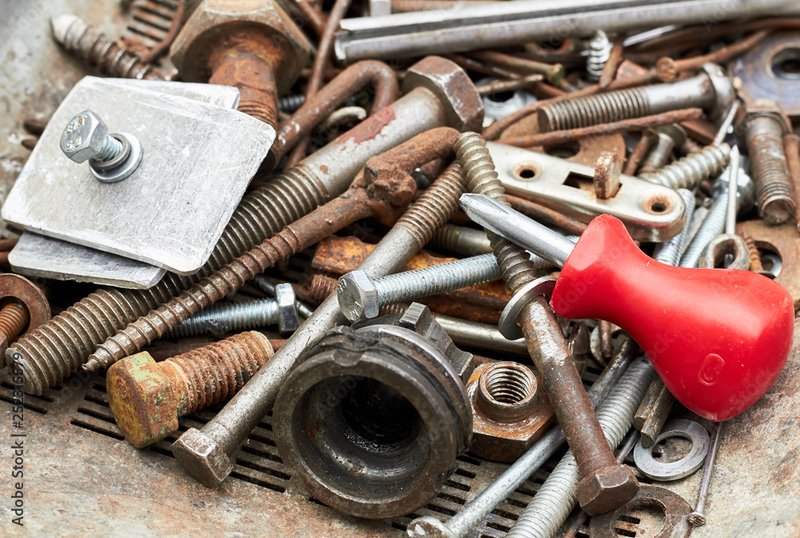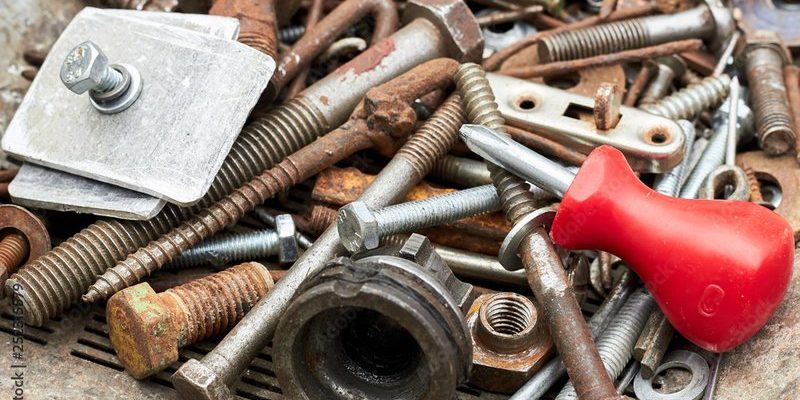
Here’s the thing: brands like Sony, Logitech, or Samsung don’t make their hardware to survive every household cleaner out there. When the wrong product meets delicate metal or circuit boards inside your favorite remote, speakers, or headphones, you risk corrosion—basically, a chemical rust that eats away at the hardware. That’s where this guide comes in: untangling what went wrong, how corrosion happens, and how you can bring your gear back to life, even if things look bleak.
Why Cleaning Products Cause Corrosion on Hardware
You might be wondering why something designed to clean would actually harm your hardware. Honestly, it’s all about chemistry. Most everyday cleaning sprays and wipes contain water, alcohol, ammonia, or even bleach. While these are great on countertops or sinks, they just don’t play nice with the metals and electronics inside a remote, keyboard, or headset.
Corrosion is what happens when chemicals and moisture meet metal. For example, battery contacts inside a universal remote or a brand-specific Sony device are often made from lightweight alloys. When you use a cleaner with too much water or harsh chemicals, it can seep into tiny cracks, react with the metal, and start breaking it down. Over time, this creates a crusty, white, or green residue—classic signs of corrosion.
Here’s something most people don’t realize: even wipes labeled “safe for electronics” can be risky if you use them too often, leave residue behind, or don’t let your hardware dry completely. It’s a slow burn. Corrosion can build up quietly under buttons or inside the battery compartment, only showing itself after weeks or months.
Spotting the Signs of Corrosion in Everyday Hardware
Let me explain what to look for if you think your cleaning routine went sideways. Corrosion often starts small. In a TV remote, you might notice the battery doesn’t hold a charge, or the power button is stubborn. Open the battery cover and you might see white powder, green fuzz, or even just a weird metallic smell. That’s your first hint something’s gone wrong.
Other times, corrosion hides deeper in your hardware. Gaming controllers with sticky buttons, speakers with static, or even smart home devices that won’t sync or pair anymore can all fall victim to corroded internal contacts. If you spot any of these issues:
- Sticky or unresponsive buttons
- Strange colors or residue on metal parts
- Weird smells (kind of metallic or sour)
- Devices that won’t reset, sync, or start
It’s likely corrosion is the culprit. The tricky part is, corrosion doesn’t always happen right away. Sometimes, a remote seems fine for weeks after cleaning before these symptoms appear. So if your device starts acting up after a deep clean, it’s worth checking the battery area or under accessible panels for any strange build-up.
How to Safely Assess and Disassemble Corroded Hardware
If you suspect corrosion, the first step is to safely check your hardware—never just jump in with a screwdriver and hope for the best. Here’s what I do:
First, power down. Remove the batteries or unplug any cables. Safety first.
Next, inspect the exterior closely. Look for discoloration, sticky residue, or anything unusual around seams or openings. If you’re working with a brand like Logitech or Apple, use a small prying tool or even a plastic guitar pick to gently separate snap-together pieces.
Go slow. Tiny screws or tabs can break easily. Snap a quick photo before you start so you remember how everything fits.
For universal remotes or most small electronics, open the battery compartment first. If you see white powder or green fuzz, carefully tap the device over a trash can and use a dry toothbrush to loosen anything stuck on. If things seem really bad—like liquid dripping or sticky leaks—stop and wash your hands. Some old battery corrosion can be irritating to skin.
Cleaning Corroded Contacts and Components: What Actually Works
So you’ve found corrosion. Now what? There’s a right and wrong way to clean it. Honestly, the key is being gentle and patient—no scrubbing with metal tools or household cleaners.
- Start with a dry toothbrush or soft cloth to remove loose corrosion.
- If there’s stubborn residue, dampen a cotton swab with a bit of isopropyl alcohol (nothing lower than 90% purity). Alcohol evaporates fast and won’t leave conductive residue.
- Carefully wipe battery contacts, circuit boards, or connectors. Don’t flood the area—just use enough to dissolve the grime.
- For really tough spots, a pencil eraser can help polish away surface corrosion on metal contacts.
Never use water, bleach, or vinegar here—those do more harm than good. And don’t try to “reset” a device while it’s still wet inside. Let everything air dry fully before putting it back together. This can take several hours, but rushing risks a permanent short-circuit.
Repairing or Replacing Severely Corroded Parts
If cleaning doesn’t bring your device back, things might be more serious. Some corrosion eats away at metal completely, leaving gaps, pitting, or broken connections. When this happens, you might need to repair or replace individual parts.
Battery contacts are often the first to go. If they’re badly pitted or completely gone, you can sometimes find replacement contact strips online for common brands like Samsung or Sony. These just snap into place but may require a little soldering for a solid connection. If you’re not comfortable with soldering, a local repair shop can do this quickly.
For deeper issues—like corroded circuit traces or snapped buttons inside a remote—replacement can get tricky. Some universal remotes are so affordable that it makes more sense to buy a new one. On the other hand, high-end or specialty remotes may be worth the effort, especially if sync or code setup is unique to your home devices.
Always weigh the cost of parts and your time versus simply replacing the hardware. Sometimes, that’s the smartest troubleshooting fix.
Preventing Future Corrosion: Smarter Cleaning Practices
Here’s something I wish more people knew: keeping hardware clean doesn’t mean you have to risk damage. Prevention is always easier than repair. For most remotes, controllers, and other gadgets, less is more.
- Stick to dry microfiber cloths for routine dusting.
- If you must disinfect, spray isopropyl alcohol lightly on a cloth—never directly on the device—and wipe gently.
- Avoid household cleaners, kitchen wipes, or anything with ammonia/bleach.
- Let hardware dry fully before putting batteries back or pairing with other devices.
If you’re dealing with a spill or sticky residue, remove batteries or power first, then go slow. Let the device air out after cleaning and before powering on or resetting. This helps avoid accidental shorts and keeps your hardware pairing and syncing like new.
Universal vs. Brand-Specific Remotes: Is One More Vulnerable?
You might be wondering if your universal remote is more at risk than the fancy brand-name one that came with your TV. In reality, all remotes are vulnerable to corrosion if cleaned incorrectly, but there are some differences worth noting.
Universal remotes often use more affordable materials and basic contacts, so they might corrode a little faster if exposed to harsh cleaners. Brand-specific remotes (like those from Sony, LG, or Samsung) tend to have tighter construction and sometimes use coated contacts for better resistance. But even these aren’t immune—especially if you use too much liquid or get cleaner inside the buttons or battery compartment.
The big thing is this: regardless of brand, the same cleaning and troubleshooting rules apply. Keep things dry, avoid risky products, and use alcohol sparingly. If you run into problems with codes, syncing, or battery life after cleaning, always check for hidden corrosion before trying to reset or pair the device. Sometimes, solving the hardware issue will fix those persistent remote problems, too.
When to Call in a Professional (and What to Expect)
If your remote, controller, or other hardware still isn’t working after a thorough cleaning, it might be time to get help. Professional repair shops have specialized tools and cleaning agents that can reach places you can’t. They can also handle delicate soldering or parts replacement if corrosion has caused real damage.
Here’s what to expect:
- Diagnostic assessment: They’ll open up your device, check for hidden corrosion, and test key functions like battery connection or button response.
- Professional cleaning: Ultrasonic cleaners or specialty solvents can sometimes reverse damage that at-home fixes can’t reach.
- Parts replacement: If contacts, buttons, or other hardware are too far gone, a pro can swap these out or recommend a compatible universal remote.
Costs vary. For a basic remote, you might be better off replacing it. For high-end controls or unique devices—think smart home hubs or specialty gaming controllers—the repair route might save you time and money in the long run. Make sure you get a clear quote before committing, and ask about warranties on repair work.
Bringing Your Hardware Back from Corrosion
Repairing hardware that’s corroded due to incorrect cleaning products isn’t impossible, but it does take patience and a gentle touch. Think of it like reviving a wilted plant after watering it with soda instead of water—a little know-how, the right tools, and some TLC can make a world of difference. Next time you reach for a wipe or spray, go slow and remember: keeping your hardware clean should never come at the expense of its life span. With these tips, your remotes, controllers, and other gadgets can stay crisp, responsive, and ready for whatever code, sync, or battery challenge comes their way.
